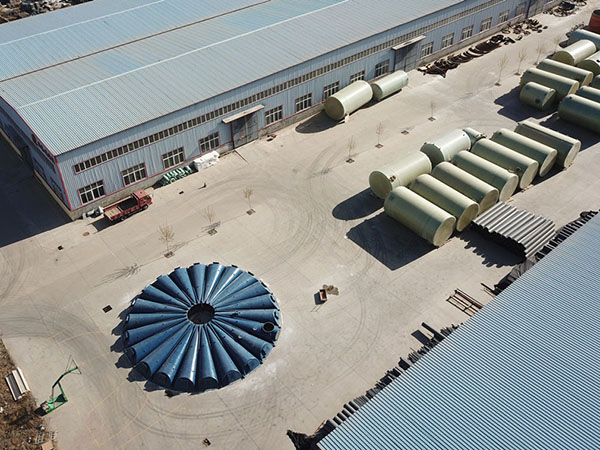
-
 Afrikaans
Afrikaans -
 Albanian
Albanian -
 Amharic
Amharic -
 Arabic
Arabic -
 Armenian
Armenian -
 Azerbaijani
Azerbaijani -
 Basque
Basque -
 Belarusian
Belarusian -
 Bengali
Bengali -
 Bosnian
Bosnian -
 Bulgarian
Bulgarian -
 Catalan
Catalan -
 Cebuano
Cebuano -
 China
China -
 China (Taiwan)
China (Taiwan) -
 Corsican
Corsican -
 Croatian
Croatian -
 Czech
Czech -
 Danish
Danish -
 Dutch
Dutch -
 English
English -
 Esperanto
Esperanto -
 Estonian
Estonian -
 Finnish
Finnish -
 French
French -
 Frisian
Frisian -
 Galician
Galician -
 Georgian
Georgian -
 German
German -
 Greek
Greek -
 Gujarati
Gujarati -
 Haitian Creole
Haitian Creole -
 hausa
hausa -
 hawaiian
hawaiian -
 Hebrew
Hebrew -
 Hindi
Hindi -
 Miao
Miao -
 Hungarian
Hungarian -
 Icelandic
Icelandic -
 igbo
igbo -
 Indonesian
Indonesian -
 irish
irish -
 Italian
Italian -
 Japanese
Japanese -
 Javanese
Javanese -
 Kannada
Kannada -
 kazakh
kazakh -
 Khmer
Khmer -
 Rwandese
Rwandese -
 Korean
Korean -
 Kurdish
Kurdish -
 Kyrgyz
Kyrgyz -
 Lao
Lao -
 Latin
Latin -
 Latvian
Latvian -
 Lithuanian
Lithuanian -
 Luxembourgish
Luxembourgish -
 Macedonian
Macedonian -
 Malgashi
Malgashi -
 Malay
Malay -
 Malayalam
Malayalam -
 Maltese
Maltese -
 Maori
Maori -
 Marathi
Marathi -
 Mongolian
Mongolian -
 Myanmar
Myanmar -
 Nepali
Nepali -
 Norwegian
Norwegian -
 Norwegian
Norwegian -
 Occitan
Occitan -
 Pashto
Pashto -
 Persian
Persian -
 Polish
Polish -
 Portuguese
Portuguese -
 Punjabi
Punjabi -
 Romanian
Romanian -
 Russian
Russian -
 Samoan
Samoan -
 Scottish Gaelic
Scottish Gaelic -
 Serbian
Serbian -
 Sesotho
Sesotho -
 Shona
Shona -
 Sindhi
Sindhi -
 Sinhala
Sinhala -
 Slovak
Slovak -
 Slovenian
Slovenian -
 Somali
Somali -
 Spanish
Spanish -
 Sundanese
Sundanese -
 Swahili
Swahili -
 Swedish
Swedish -
 Tagalog
Tagalog -
 Tajik
Tajik -
 Tamil
Tamil -
 Tatar
Tatar -
 Telugu
Telugu -
 Thai
Thai -
 Turkish
Turkish -
 Turkmen
Turkmen -
 Ukrainian
Ukrainian -
 Urdu
Urdu -
 Uighur
Uighur -
 Uzbek
Uzbek -
 Vietnamese
Vietnamese -
 Welsh
Welsh -
 Bantu
Bantu -
 Yiddish
Yiddish -
 Yoruba
Yoruba -
 Zulu
Zulu
Durable Fiberglass Flanges for High-Performance Applications and Improved Longevity
Understanding Fiberglass Flanges A Comprehensive Overview
In the diverse world of industrial manufacturing and construction, materials play a pivotal role in ensuring reliability, durability, and performance. One such material that has gained significant traction in recent years is fiberglass. Particularly, fiberglass flanges have emerged as popular components in various piping systems, owing to their unique properties and advantages.
Fiberglass flanges are connectors made from fiberglass-reinforced plastic (FRP), which combines the strength of fiberglass with the lightweight characteristics of plastics. This composite material is formed by combining glass fibers with a resin base, resulting in a product that is not only robust but also resistant to various environmental factors, including corrosion, chemicals, and temperature fluctuations.
One of the most notable benefits of using fiberglass flanges is their resistance to corrosion. Unlike traditional metal flanges, which can rust or degrade when exposed to harsh chemicals or moisture, fiberglass flanges maintain their structural integrity over time. This quality makes them especially valuable in industries such as chemical processing, wastewater treatment, and marine applications, where exposure to corrosive substances is commonplace.
Additionally, fiberglass flanges are considerably lighter than their metal counterparts. This lightweight nature facilitates easier handling, transportation, and installation, ultimately saving time and reducing labor costs. In industries where efficiency is paramount, the reduced weight of fiberglass flanges can lead to significant operational benefits.
fiberglass flange

The versatility of fiberglass flanges extends to their ability to be manufactured in various sizes, shapes, and specifications. Customization options are available to meet the specific needs of different projects, whether it involves varying diameters, thicknesses, or flange types (such as raised face, flat face, or ring-type joint). This adaptability makes fiberglass flanges an ideal choice for both new installations and repair work in existing systems.
Another essential aspect to consider is the thermal insulation properties of fiberglass flanges. Due to their non-metallic nature, they provide excellent thermal resistance, making them suitable for applications involving temperature extremes. By minimizing heat transfer, fiberglass flanges contribute to the overall energy efficiency of the piping systems they are integrated into.
Moreover, the installation of fiberglass flanges can lead to lower maintenance costs over time. Their durability and corrosion resistance mean that they are less likely to develop leaks or require frequent replacements compared to metal flanges. This long lifespan, combined with lower maintenance needs, ultimately results in cost savings for businesses in the long run.
While fiberglass flanges offer numerous advantages, it is essential to approach their use with an understanding of the limitations. For instance, they may not possess the same load-bearing capacity as steel flanges, making them unsuitable for high-pressure applications. Thus, careful consideration of the operational conditions and requirements is crucial when selecting the appropriate flange material.
In conclusion, fiberglass flanges represent a significant advancement in piping technology, offering a lightweight, corrosion-resistant, and thermally efficient solution for various industrial applications. Their customization potential and lower maintenance needs further enhance their appeal, making them a sensible choice for modern manufacturing environments. As industries continue to evolve and prioritize sustainability and performance, fiberglass flanges are poised to become an increasingly integral component of effective piping systems worldwide.
Latest news
-
High-Quality Fiberglass Car Bodies Durable GRP Car & Boat Body SolutionsNewsJul.08,2025
-
High-Quality Fiberglass Dual Lamination Product Manufacturer Durable FRP & GRP Dual Lamination SolutionsNewsJul.08,2025
-
Rectangular Tank with Dimensions for GRP Calculation Custom Fiberglass GRP Rectangular TanksNewsJul.07,2025
-
High-Quality Fiberglass Weir Custom FRP Weir & Fiberglass Tanks ManufacturerNewsJul.07,2025
-
CPVC FRP Pipe A Reliable Choice for Industrial Applications High Strength & Corrosion ResistanceNewsJul.07,2025
-
Fiberglass Scrubber for Effective Cleaning and Stain Removal – Superior Performance in Various ApplicationsNewsJul.06,2025









